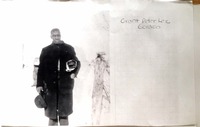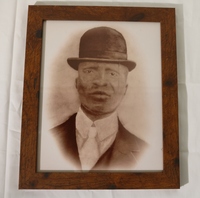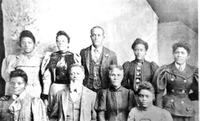Browse Exhibits (6 total)
People

In this exhibit, several notable individuals who have contributed to either the history of Beloit or to its retelling are featured to help give light to Black life and community in Beloit. They are just a few examples of many dedicated and deeply involved citizens of Beloit.
This exhibit was created by Beloit College students, including Emma Hahn '20, Hayden Lamphere '20, Megan O'Meara'20, Margaret Baugh '22, Lauren Woolf '21, Matthew Elliott '22, and Elaina "Nana" Heaton '22.
Origins

Black community members share personal memories of leaving the South and coming to Beloit. This exhibit shows the places they came from.
This exhibit was created by Beloit College students, including Lauren Woolf'21.
Work

In an oral history interview of a prominent Beloit native, Dr. Brandi Brown cited the values of family, work, and education. The turn of the century had given rise to the problematic agricultural industry of sharecropping, and industrial cities such as Beloit proved attractive to many who sought a new way of life. According to a 1955 study by Dr. Omari Peter Kwame Omari, 63% of African Americans who had migrated to Beloit during the Great Migration did so for employment opportunities. While many of those who came to Beloit worked in the foundries of manufacturing companies such as Fairbanks Morse, others found jobs in the privatized workforce and the military; many women at this time were limited to the domestic workforce as house cleaners, laundresses, and caretakers. This exhibit brings to light the stories of Beloit individuals and their time in the workforce, showing how that value shaped Beloit into the rich historical city it is today.
This exhibit was created by Beloit College students Morgan Lippert (2021) and Kaylie Williams (2021).
Churches

Places of worship, regardless of their religious ties, created a gathering place for families and offered various services to the community. The majority of the black churches in Beloit opened early in the Great Migration years, giving migrants a place to worship when they arrived.
Bethel AME, the oldest black church in Beloit, was founded by 22 people in November 1881. The church was organized by Jesse S. Woods, a Beloit College alumnus. Bethel AME was the first Black Church to be founded in Beloit and for some time, until the founding of fellow churches in 1917, it was the only one.
In an article titled “Three Quarters of a Century and More," in 1925 Emmanuel Baptist Church started a hot lunch program for the needy, a Learning Center with homework assistance for students, and a Social Action Committee that assisted with voter registration.
This exhibit was created by Beloit College students Nathan Lemke '22, Katelynn Sinclair '20, and Matthew Elliott '22.
Community

"My heart will always be in Beloit."
—David Pride, History Harvest interviewee and son of Rev. U.S. Pride of the original New Zion Baptist Church of Beloit
The migration of Black families to Beloit from the South transformed the community. Redlining, the systematic process of blocking access of locations and services to families because of race or income, was common in and around Beloit and other northern cities populated throughout the Great Migration. This process created racial segregation in the neighborhoods around Beloit.
Many families considered housing to be safer in Beloit than where they or their relatives lived in the South. The Fairbanks Flats on the west side of Beloit had running water, a bathroom, and electricity, unlike many areas of the South where Black families lived before. The Black community of Beloit also created some of its own sports teams and community groups where community members could relax and have fun.
Education remained an integral value to the Black community of Beloit. Black migrants often said that schools for Black children in the South had fewer resources than ones further north, which contributed to the decision for families to move to cities like Beloit. Some southern schools even closed during planting season, displaying the grip the South’s tenant farming legacy still had on its Black population.
This exhibit was created by Beloit College students Fiona Cismesia '21, Gray Denney '20, Meg Kulikowski '21, Lauren Woolf '21, Margaret Baugh '22, Megan O'Meara '20, Matthew Elliott '22, and Elaina "Nana" Heaton '22.
Family

Family ties run deep and wide within the Black community of Beloit. Family is not exclusively forged through blood ties, but also through the experience of Beloit, in schools, sports, and local get-togethers. Oral histories and depictions of family life in photo albums help reveal the importance of family to the recently migrated Black community in Beloit.
This exhibit was created by Beloit College Students Eva Laun-Smith (2021), George Jacobsen (2019), and Rosebud Johnson (2020)